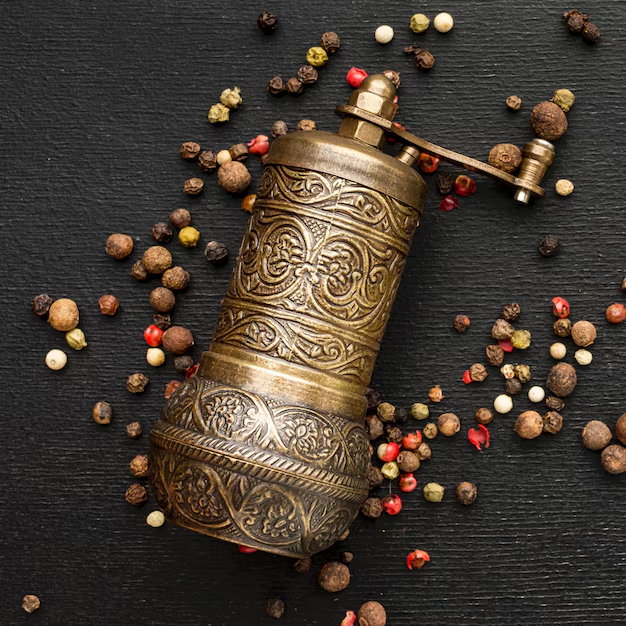Gunpowder flasks were essential accessories during the era of black powder firearms, combining functionality with artistic craftsmanship. One example that stands out for collectors and historians is the W. Bartram Nimrod Repousse Shell Motif Gunpowder Flask. Known for its decorative artistry and practical use, this flask offers insights into the craftsmanship, utility, and cultural significance of antique firearms accessories.
In this article, we’ll explore the origins of W. Bartram flasks, the meaning behind the shell motif, and why this piece is highly coveted among enthusiasts of historical artifacts.
1. What is a Gunpowder Flask?
A gunpowder flask is a container used to store and dispense black powder for loading firearms. These flasks were carried by hunters and soldiers during the 18th and 19th centuries, often intricately decorated with various motifs symbolizing hunting, warfare, or nature.
2. Who Was W. Bartram?
W. Bartram was a noted 19th-century maker of gunpowder flasks, specializing in high-quality brass and copper designs. His work is appreciated not only for its durability but also for the craftsmanship in repousse techniques—a process where metal is hammered from the reverse side to create intricate relief designs.
Bartram flasks often bore hunting themes, reflecting the spirit of the time when hunting was both a necessity and a recreational activity.
3. The Shell Motif: Symbolism and Craftsmanship
The repousse shell motif on this specific flask is not just decorative but carries symbolic weight. Shells have historically represented protection, life, and renewal, fitting symbols for an item used in hunting or combat situations.
The craftsmanship of the shell design on the W. Bartram Nimrod flask is meticulous, with raised patterns offering a tactile experience. This motif may also evoke natural themes, aligning with hunting traditions that revered nature.
4. The Nimrod Reference: A Hunter’s Icon
The term “Nimrod” comes from the Bible, referring to a mighty hunter. The word has since become synonymous with skilled hunting and is often used as a mark of excellence. Flasks like this one were likely marketed to sportsmen or those who wanted to project an image of being part of the elite hunting community.
5. Materials and Design
The W. Bartram Nimrod flask is typically made from brass or copper, two materials known for their durability and resistance to corrosion. The metalwork is completed with repousse embossing—a time-consuming and skilled process that involves hammering the design from the inside out.
These flasks also feature functional elements, such as:
- Spring-loaded spouts for precise powder pouring.
- Lanyard rings for attaching the flask to a belt or bag.
- Screw caps to ensure the gunpowder stayed dry and secure.
6. The Role of Gunpowder Flasks in History
During the 18th and 19th centuries, before the invention of cartridge ammunition, gunpowder flasks were essential to hunters and soldiers. They enabled precise measurement of black powder, which was critical for loading muskets, rifles, and pistols. In addition to their utility, these flasks were often treated as status symbols, with wealthier individuals favoring elaborate designs.
The Nimrod flask would have appealed to those who sought both functionality and prestige, showcasing not only its utility but also its owner’s appreciation for fine craftsmanship.
7. Why Collectors Prize the W. Bartram Nimrod Flask
Collectors of antique firearms and accessories value the W. Bartram Nimrod Repousse Shell Motif Flask for several reasons:
- Rarity: Bartram’s flasks are relatively rare, and their artistic quality makes them desirable.
- Craftsmanship: The repousse technique adds a level of detail not often seen in mass-produced flasks.
- Symbolism: The combination of the shell motif and Nimrod branding aligns with the traditions of hunting and craftsmanship, making it a meaningful collector’s piece.
- Condition: Flasks in good condition, with intact spouts and minimal wear, can fetch high prices at auctions.
8. Caring for Antique Gunpowder Flasks
Preserving a gunpowder flask like this one requires proper care and maintenance. Here are a few tips:
- Avoid over-polishing: Brass and copper flasks develop a natural patina over time, adding to their historical charm.
- Store in a dry environment: Moisture can cause corrosion, particularly around the moving parts.
- Handle with care: Avoid dropping or denting the flask, as this can damage the repousse design.
- Use display stands: If displaying the flask, ensure it’s supported properly to prevent accidental falls.
9. Market Value and Auctions
Due to its intricate design and historical significance, the W. Bartram Nimrod Repousse Shell Motif Flask can command a premium price at auctions. Depending on the condition and provenance, prices can range from $300 to $1,000 or more. Collectors of vintage firearms accessories are particularly interested in well-preserved flasks with minimal damage and working spouts.
10. Conclusion: A Masterpiece in Function and Art
The W. Bartram Nimrod Repousse Shell Motif Gunpowder Flask is more than just a practical tool from the past. It’s a masterpiece of art and utility, reflecting the craftsmanship and cultural values of a bygone era. For collectors, it represents a blend of history, artistry, and tradition—a tangible link to the days when hunting was both a livelihood and a noble pursuit.
Whether you’re a collector of antique firearms or simply appreciate historical craftsmanship, the W. Bartram flask is a worthy addition to any collection. It exemplifies the attention to detail, symbolism, and functionality that make historical artifacts so fascinating.


